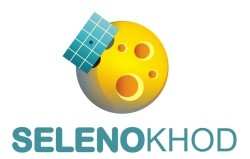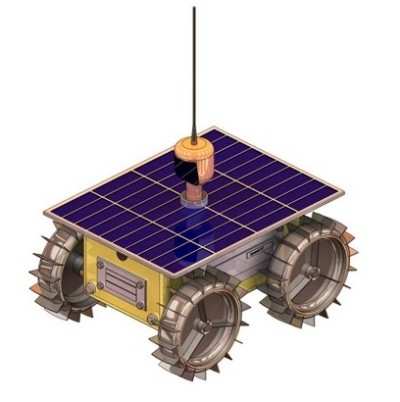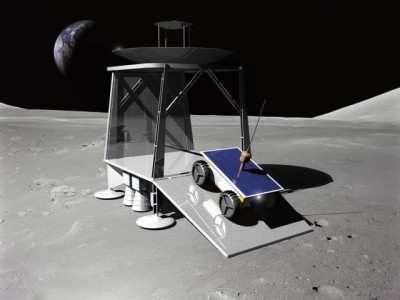Tue, Sep 22, 2009
Team Selenokhod To Vie For The $30 Million Payout
 Team Selenokhod, a Russian group of
engineers and managers, announced its official entry into the
Google Lunar X Prize competition Monday. The $30 million
competition challenges space professionals and engineers from
across the globe to build and launch a privately funded spacecraft
to the moon which is capable of completing a series of
exploration and transmission tasks as outlined in the competition's
official rules. Team Selenokhod, headquartered in Moscow, Russia
with ten group members, is among 20 teams from 44 countries that
are competing for their share of the $30 million prize.
Team Selenokhod, a Russian group of
engineers and managers, announced its official entry into the
Google Lunar X Prize competition Monday. The $30 million
competition challenges space professionals and engineers from
across the globe to build and launch a privately funded spacecraft
to the moon which is capable of completing a series of
exploration and transmission tasks as outlined in the competition's
official rules. Team Selenokhod, headquartered in Moscow, Russia
with ten group members, is among 20 teams from 44 countries that
are competing for their share of the $30 million prize.
 "The contribution progress of
(the) private sector in cosmonautics is (a) worldwide
trend nowadays. The previous international contest, (the) Ansari X
Prize, showed that non-government companies
have (opportunities) to create space technologies needed to
achieve ambitious goals. Team Selenokhod wants Russian companies to
evaluate the experience of their foreign colleagues, to understand
(the) big opportunities of private space exploration and join us in
our challenging project", said Nikolay Dzis-Voynarovskiy,
Selenokhod Team Leader.
"The contribution progress of
(the) private sector in cosmonautics is (a) worldwide
trend nowadays. The previous international contest, (the) Ansari X
Prize, showed that non-government companies
have (opportunities) to create space technologies needed to
achieve ambitious goals. Team Selenokhod wants Russian companies to
evaluate the experience of their foreign colleagues, to understand
(the) big opportunities of private space exploration and join us in
our challenging project", said Nikolay Dzis-Voynarovskiy,
Selenokhod Team Leader.

Artist's Concept
Team Selenokhod is the first Russian team to enter the Google
Lunar X Prize competition. The team's vehicle, "Selenokhod," is
comprised of two parts - a lander with a communications system and
two small four-wheeled solar powered rovers. Each of the rovers
contains four independent wheels, an HD camera, a solar panel,
rechargeable batteries and a low-gain, omni-directional antenna to
communicate with each other and the lander. Team Selenokhod hopes
to continue Russia's leading example of space exploration by being
the primary team to place the first private rover on the Moon.

Artist's Concept
"It is wonderful to have a team headquartered in Russia
participating in the Google Lunar X Prize," said William Pomerantz,
Senior Director of Space Prizes at the X Prize Foundation. "Russian
scientists and engineers demonstrated amazing capabilities with the
Lunokhod rovers and similar mission during the first race to the
Moon. Now, Nikolay and the rest of his team will be building
on the heritage of those spacecraft to help bring out about 'Moon
2.0' - a new era wherein private companies and national space
agencies collaborate to create a sustainable and robust program of
lunar exploration. That era wouldn't be complete without the
involvement of Russia's talented workforce."
More News
“These new aircraft strengthen our ability to respond quickly, train effectively and support communities nationwide. Textron Aviation has been a steadfast supporter in helpin>[...]
From 2011 (YouTube Edition): Rugged, Legendary, STOL Twin Makes A Comeback The de Havilland Twin Otter is an airplane with a long history, and it gained a reputation as a workhorse>[...]
A Wind Gust Lifted The Right Wing And The Airplane Turned To The Left Analysis: The pilot was departing from a 2,395-ft-long by 50-ft-wide turf runway. The pilot reported that afte>[...]
Have A Story That NEEDS To Be Featured On Aero-News? Here’s How To Submit A Story To Our Team Some of the greatest new stories ANN has ever covered have been submitted by our>[...]
Braking Action Advisories When tower controllers receive runway braking action reports which include the terms “medium," “poor," or “nil," or whenever weather con>[...]
 Aero-News: Quote of the Day (12.18.25)
Aero-News: Quote of the Day (12.18.25) Classic Aero-TV: Viking Twin Otter 400--Bringing the DHC-6 Back Into Production
Classic Aero-TV: Viking Twin Otter 400--Bringing the DHC-6 Back Into Production NTSB Final Report: Rans Employee Flying Club Rans S-6ES Coyote II
NTSB Final Report: Rans Employee Flying Club Rans S-6ES Coyote II ANN FAQ: Submit a News Story!
ANN FAQ: Submit a News Story! ANN's Daily Aero-Term (12.18.25): Braking Action Advisories
ANN's Daily Aero-Term (12.18.25): Braking Action Advisories






